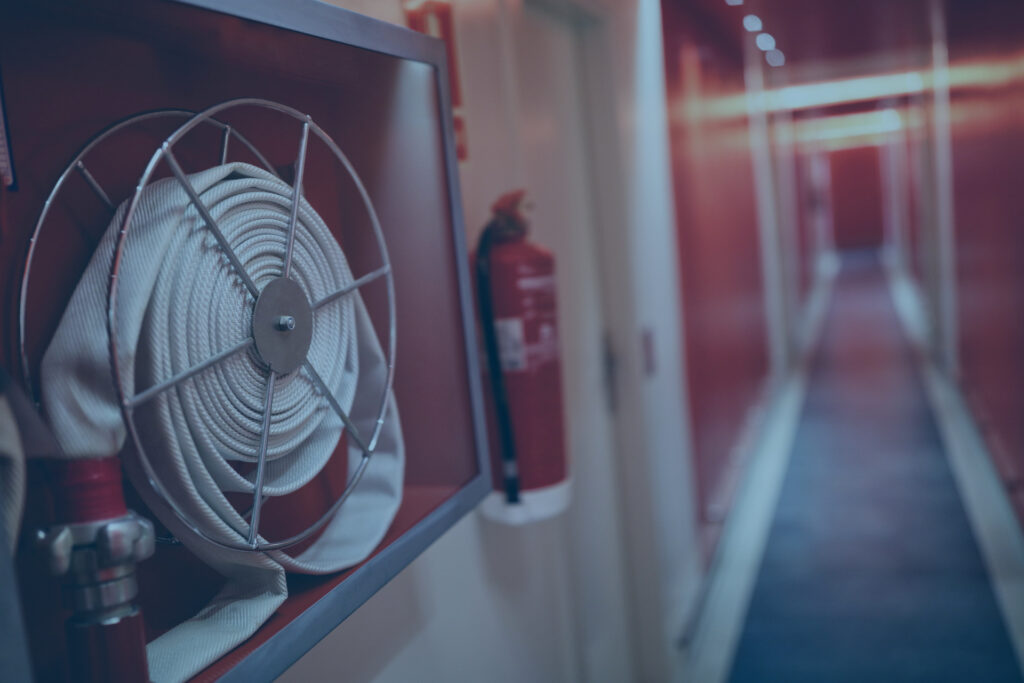Safety Zone: 13 Fire & Life Safety Tips for BCM Practitioners

Business continuity practitioners have plenty of reasons to be advocates for good fire and life safety practices at their organizations, even if that’s not one of their core responsibilities.
In today’s post, we’ll share 13 tips business continuity management (BCM) professionals can follow to make sure their companies are doing what they should to promote fire and life safety for their staff and facilities.
Related on MHA Consulting: Creating a Continuity Culture: How Your Organization Can Make Business Continuity a Habit
LIFE SAFETY AND BUSINESS CONTINUITY
At most organizations, safety is the responsibility of a dedicated team separate from the BCM team. However, the BC team’s duty to keep the organization’s operations running and enable it to recover swiftly from negative events gives them a stake in ensuring that the company is doing a good job in terms of fire and life safety preparations.
Fire and life safety issues, with their potential to harm members of the workforce, can have a dramatic impact on business continuity.
It’s unlikely that the BC team can establish fire and life safety policy, but they can ask questions of the team responsible and be an advocate for strong preparations (similar to how many BC teams interact with the IT department).
THE 13 TIPS
Many people regard 13 as an unlucky number, but in this case, it’s the opposite of that. Here are your lucky 13 fire and life safety tips for BCM practitioners:
- Ensure that appropriate barriers are in place to prevent unauthorized access to critical equipment or areas. These can range from parking barriers and electronic badges to sign-in sheets and security guards.
- Include workplace violence prevention and reaction as part of your overall training for all employees.
- Set up evacuation procedures for use in the event of an incident of workplace violence. These will likely be different in some respects from your fire evacuation procedures. (In the case of an active shooter, for example, plans might call for people on the ground floor to exit out the windows.)
- Make sure that all staff members understand and follow the procedures for controlling visitor access.
- Ensure that people know what to do if they see someone who does not seem to have a legitimate reason for being in the building.
- Establish and enforce a policy regarding bringing guns and knives into the facility.
- Create plans for dealing with people who are emotionally or physically out of control.
- Establish procedures for interacting with first responders and educate everyone on what those procedures are. In emergencies, the requirements and instructions of fire, police, and medical personnel take precedence over the organizational pecking order.
- Ensure that everyone knows the fire evacuation procedures and paths.
- Make sure that people with mobility issues are provided for in your evacuation plan. Able-bodied people should be matched up with those who might have difficulty evacuating.
- Make sure that a list is put together—and maintained under appropriate privacy protection—of individuals with significant medical challenges, such as severe diabetes or conditions that can lead to seizures or unconsciousness. This information can help first responders do a better job of helping them, if they should ever have a medical incident while at work.
- Ensure there is a process to know who is in the building at any given time, both staff and visitors.
- Ensure that fire alarms are taken seriously. At many companies, when the alarm goes off people tend to stay at their desks, evacuating only when the safety warden comes around. This approach could have serious consequences in a real emergency.
FULFILLING THE MISSION OF FIRE & LIFE SAFETY
The area of fire and life safety is commonly seen as separate from business continuity, but really it goes to the heart of what we do. To help your company protect its operations, you must also help protect the people who work there.
By following the lucky 13 tips above, and following up with the folks at your company who have direct responsibility for fire and life safety matters, you can be of service to your coworkers and also better fulfill your mission as a BCM professional.
FURTHER READING
For more information on this and other hot topics in business continuity and disaster recovery, check out these recent posts on MHA Consulting and BCMMETRICS:
- Creating a Continuity Culture: How Your Organization Can Make Business Continuity a Habit
- 8 Tips for Facility Security During the Holidays and All Year Long
- America’s Red Zones: Where Natural Disasters Cluster and What It Means for You
- The Human Factor: Optimizing Yourself and Your Business Continuity Team
- When the Dust Settles: How to Learn from a Business Disruption









